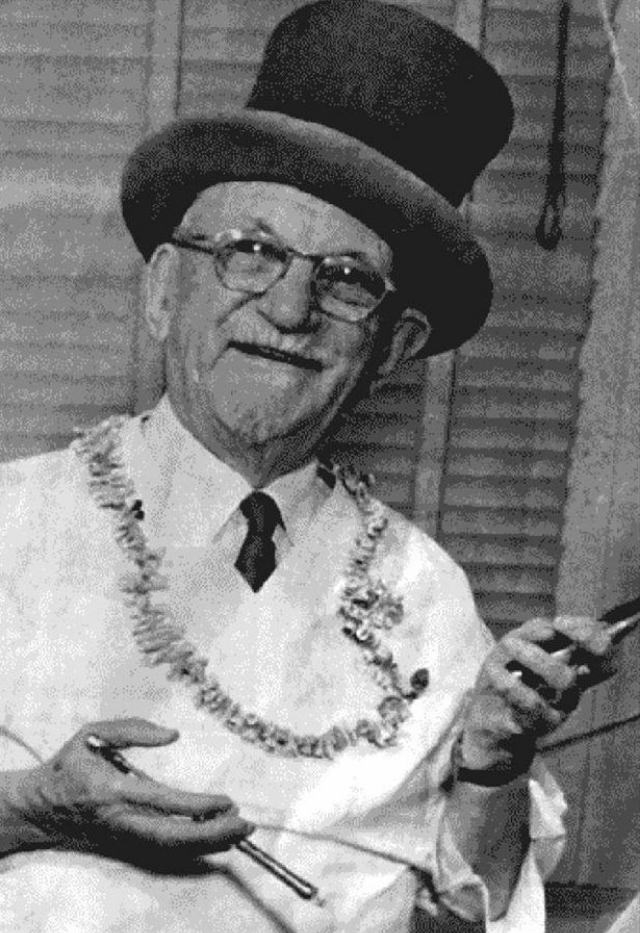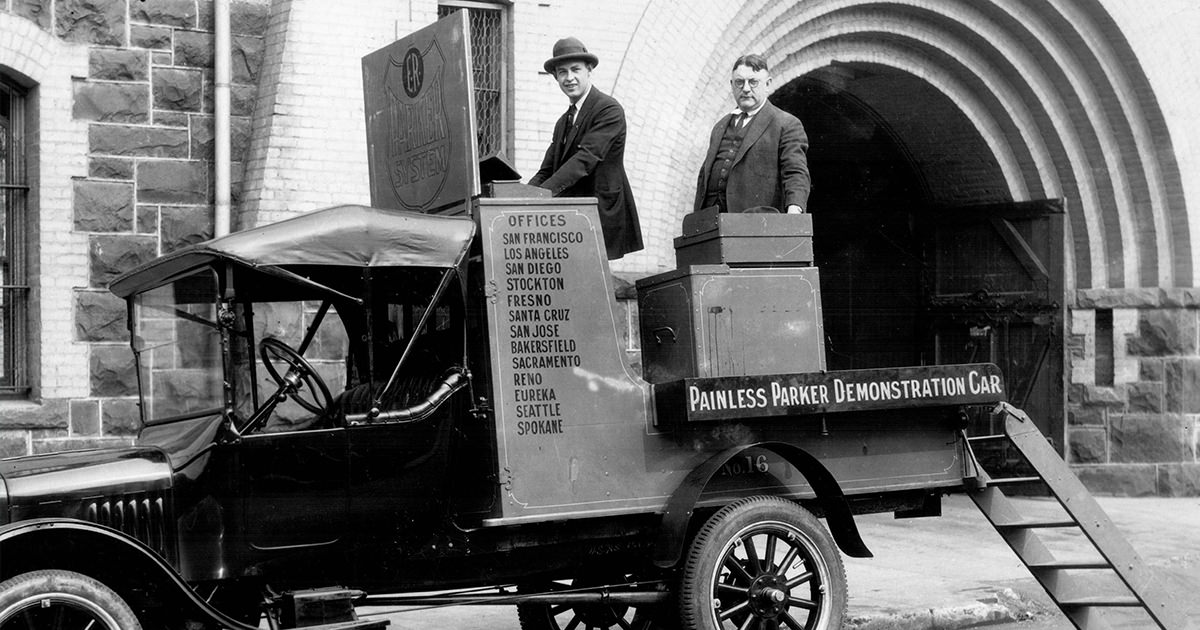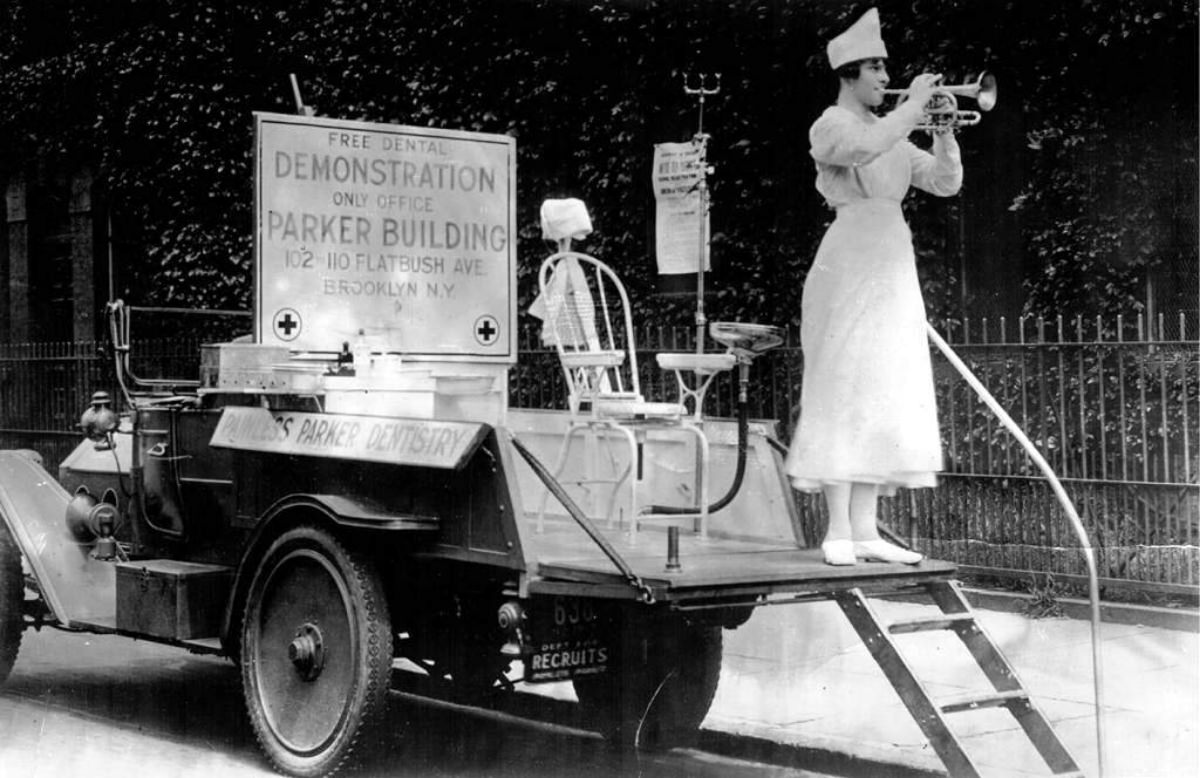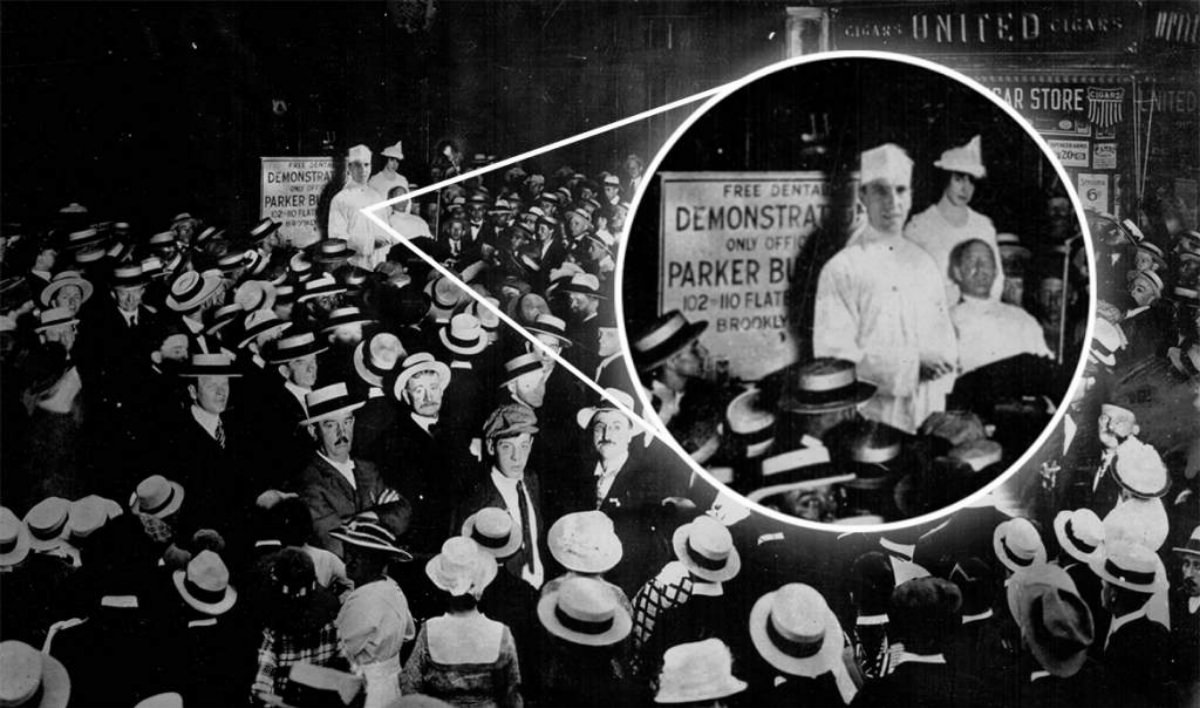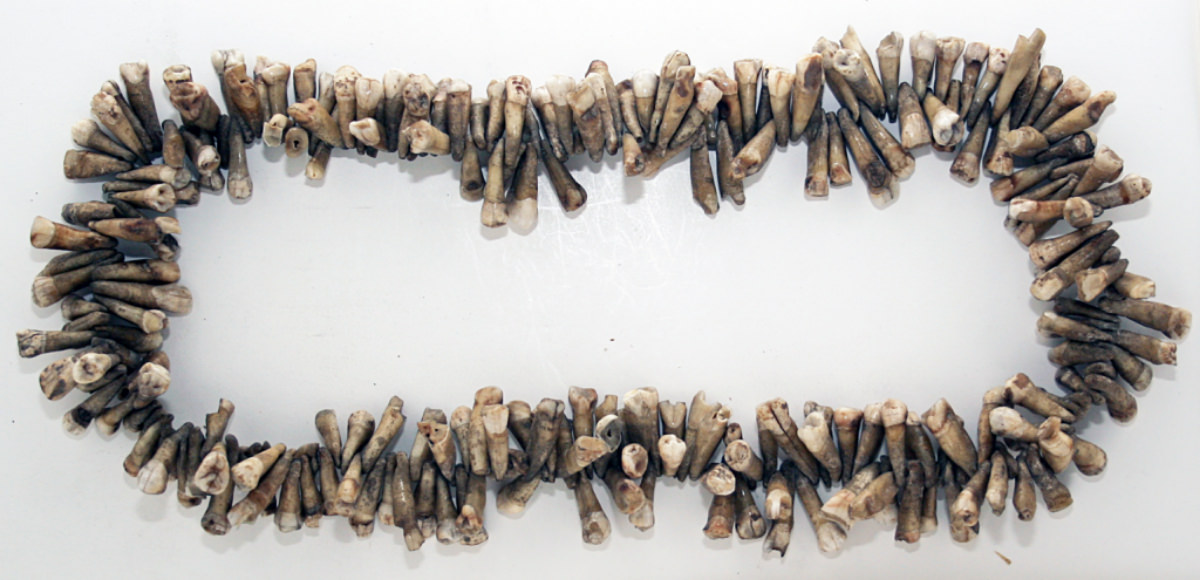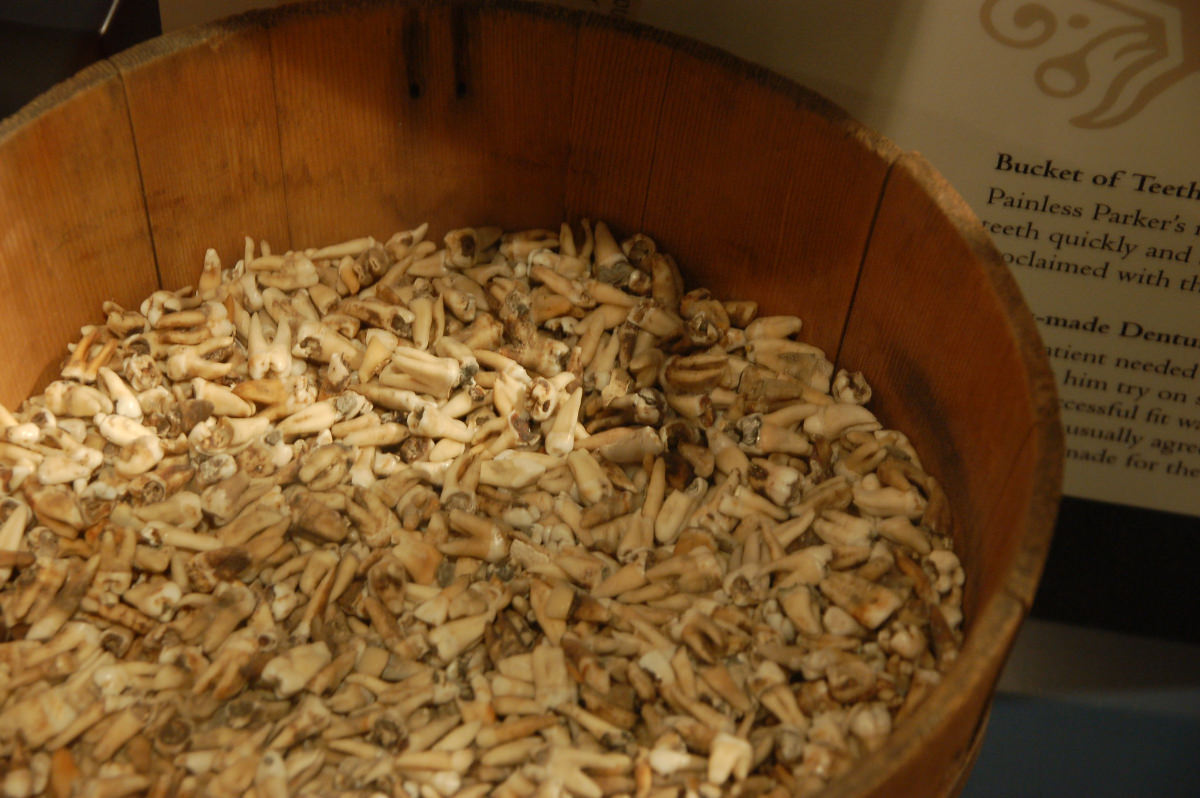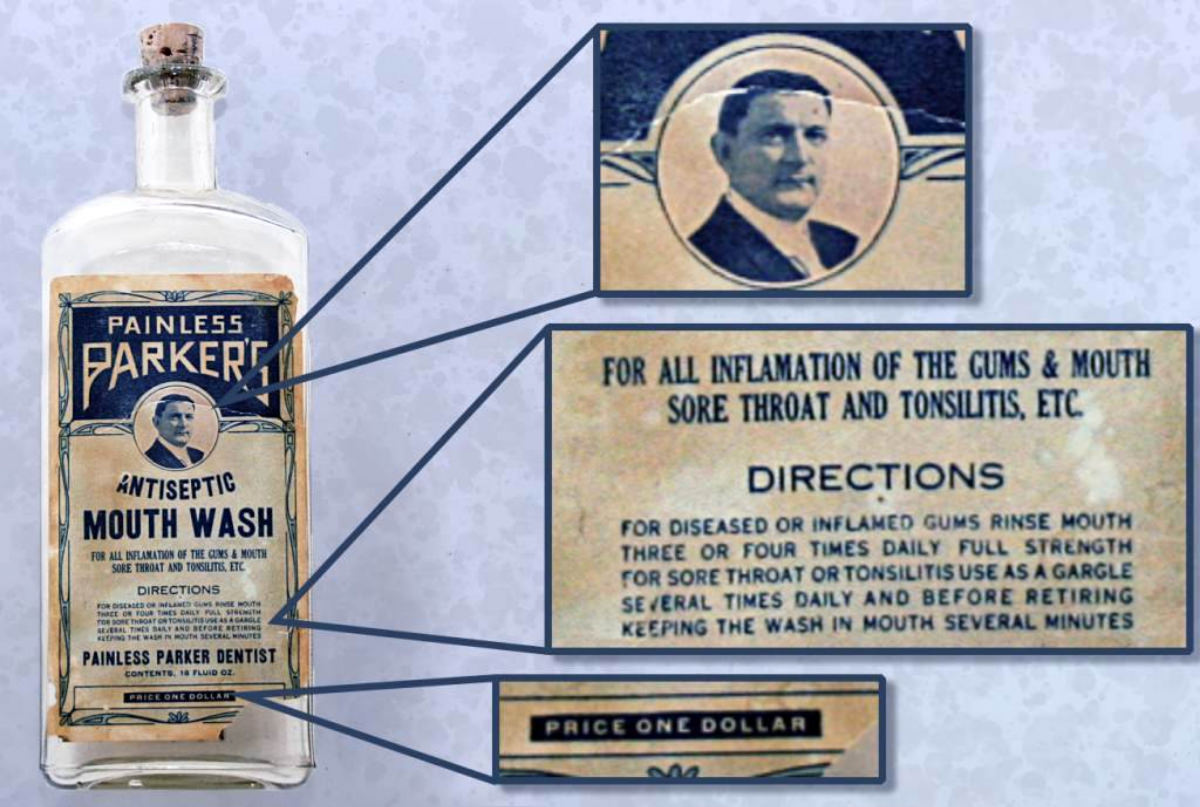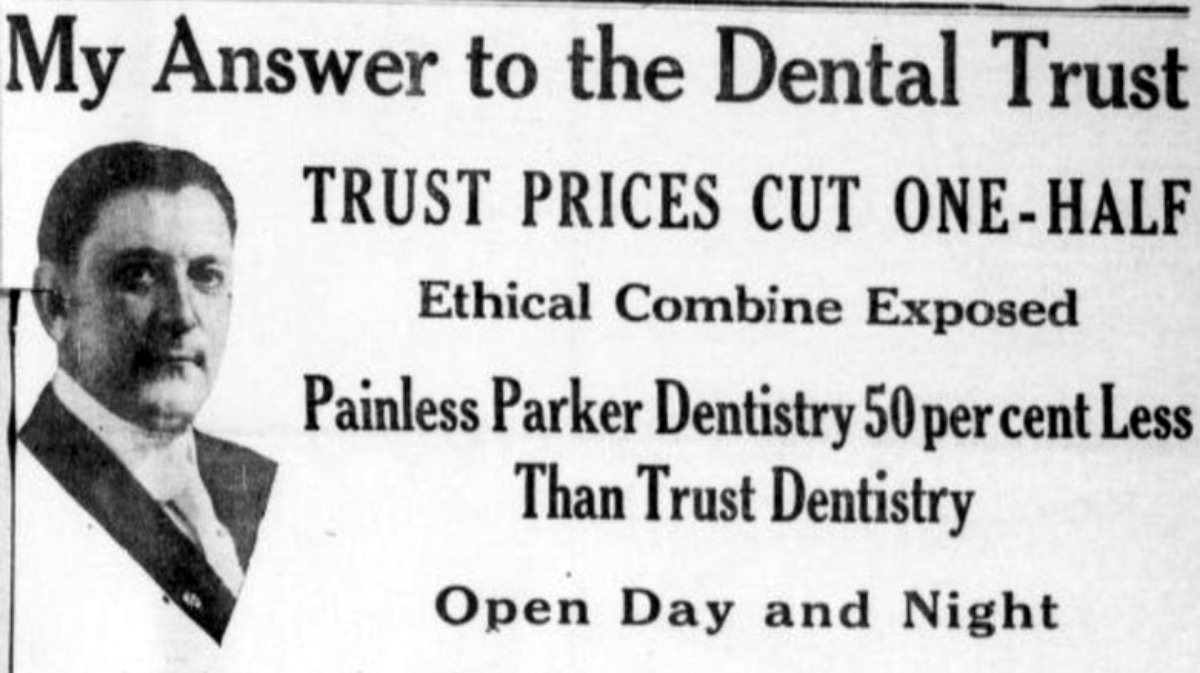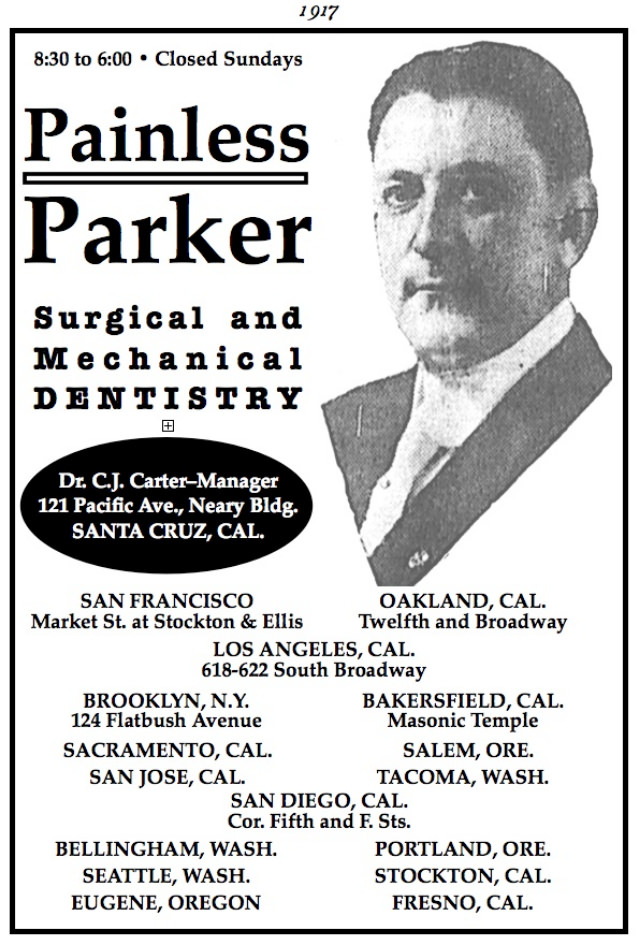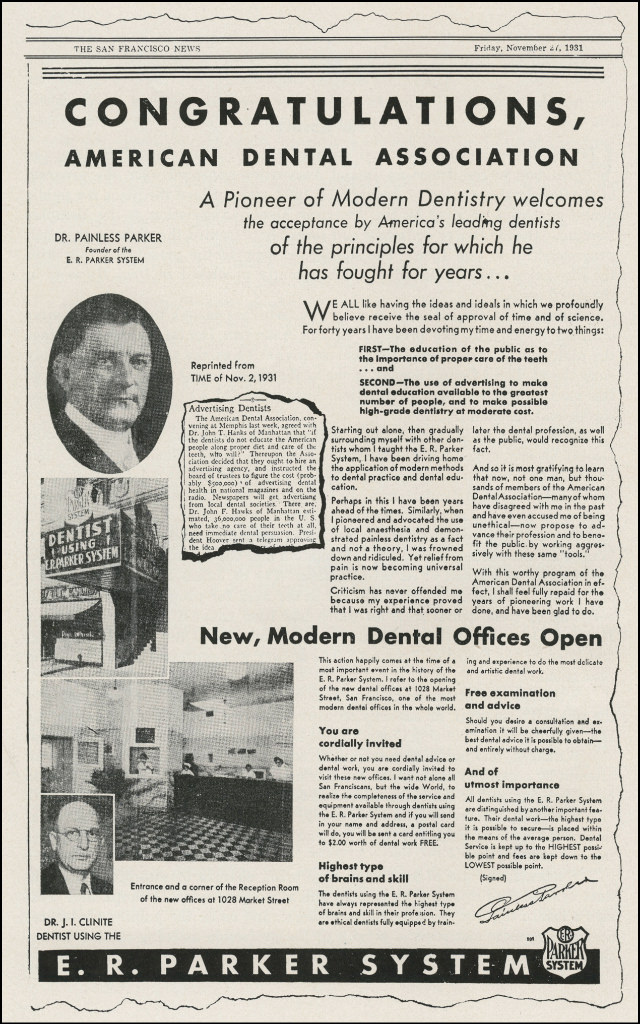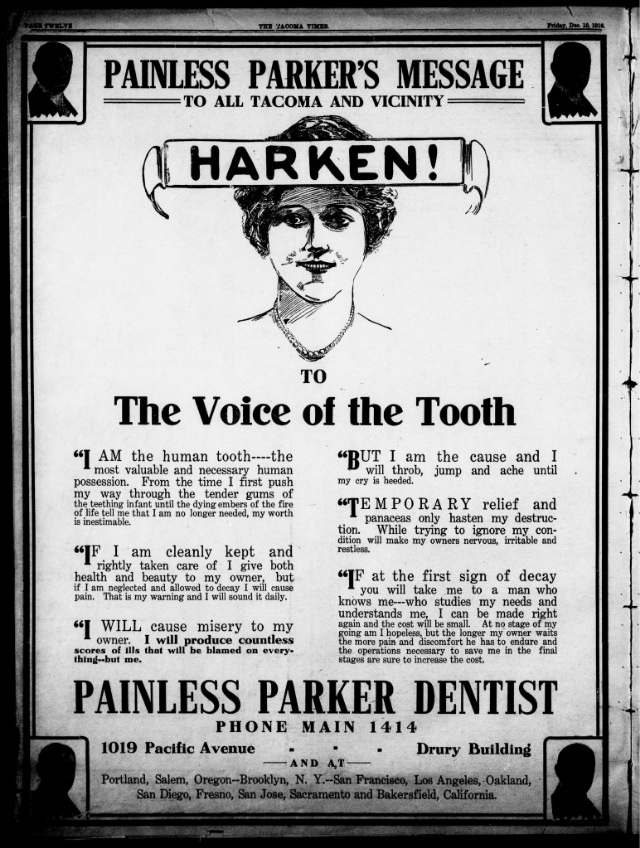Dentists of the early 20th century distracted their patients with showgirls and brass bands before local anaesthesia was available to manage pain. Dr Parker found that adding a bit of the old razzle-dazzle not only kept patients from focusing too much on the root canal it attracted prospective patients as well.
Parker was born Edgar R.R. Parker in 1872 in St. Martins, New Brunswick, Canada. He studied dentistry at the Philadelphia Dental College, which later became the School of Dentistry at Temple University. Parker was the dumbest student and only graduated after pleading with his dean. Parker moved back to Canada to work as a dentist. However, there was a problem. It was unprofessional to solicit patients in those days, so Parker found himself still without a client after six weeks. He decided to toss ethics to the wayside and start an advertising campaign. Rather than a new set of dentures, the desperate dentist bargained with a sign maker for “Painless Parker.” He injected patients with a solution of watered-down cocaine and pulled their teeth. The extraction would cost 50 cents, or the patient would be charged $5 instead.
After finding success with his street corner dentistry, Parker took his show on the road. After employing a former P.T. Barnum manager, he formed Parker Dental Circus, which toured throughout Canada and the U.S. His music drew huge crowds and convinced many people to agree to have their teeth extracted. When the band played, you couldn’t hear the patients screaming or moaning as they endured anything but painless dentistry. On one occasion, he claimed to have pulled 357 teeth in one day, which he wore on a necklace. To drown out the patient’s screams of pain, Parker would tap his foot on the ground while he pulled the tooth. He still used the cocaine solution, but instead of injecting it, he squirted it into the mouth cavity-and it only worked occasionally, if at all.
Nevertheless, Parker became popular. The brass band and the rest of the circus were an excellent distraction for dental patients and visitors. The band kept everyone from hearing the moans-and everyone, but the hapless patient assumed the treatment didn’t hurt.
Dentists in New York were not pleased with his escapades and called him “a menace to the dignity of the profession.” They drove him out of town, but he set up shop in San Francisco in 1912. He was then sued for false advertising. Parker changed his name to “Painless” to avoid them. He hired assistants and established a chain dentistry business as his practice grew. In the end, Parker owned 28 dental offices on the West Coast, employed over 70 dentists, and earned $3 million per year. This allowed him to retain his catchy brand until he died in 1952. The song “Orange Claw Hammer” by Don Van Vliet mentions Parker. Parker’s necklace of 357 teeth and a large wooden bucket filled to the brim with teeth he pulled can be seen at the Historical Dental Museum of Temple University School of Dentistry. He lectured the crowd on the importance of dental hygiene as he sat with a bucket of teeth at his feet.


